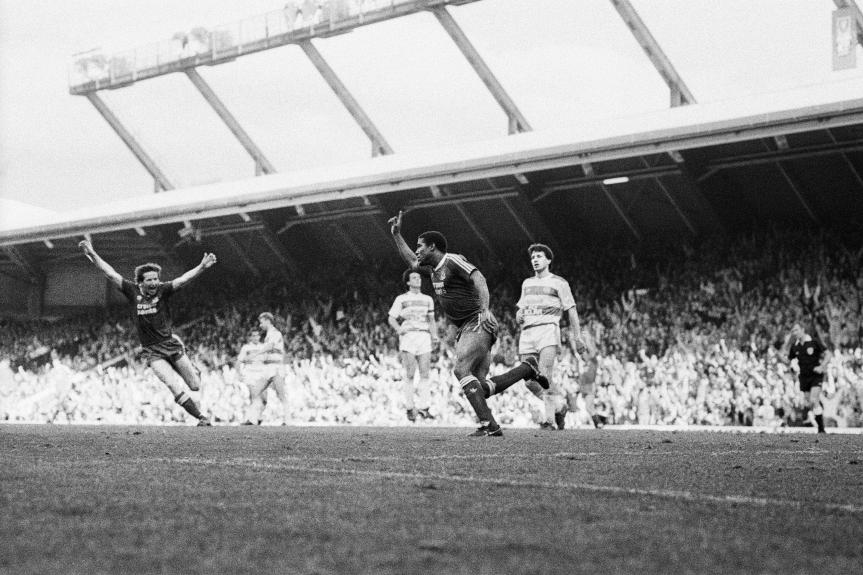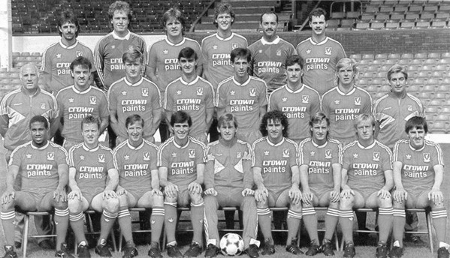THE MID-1980s was a grim time for football in England. The authorities, both at home and abroad, had run out of patience with the game’s hooligan problem, crowds were falling at a worrying rate, stadiums were mostly ramshackle and the national team was struggling to be relevant. In 1985, the Heysel Stadium disaster at the Liverpool-Juventus European Cup final, led to English clubs being banned from European competition. This was not just a blow for those clubs used to regular European involvement, such as Liverpool, but also to Everton, who won the league in 1985 and 1987, Coventry City, Luton Town, Norwich City, Oxford United, Arsenal, Wimbledon and Nottingham Forest, among others, who would have qualified for Europe in normal circumstances.
For Liverpool, the ban came at a time when their team was approaching the end of an era. Ian Rush, who had scored prolifically since breaking into the first team, moved on to Juventus in 1987, earning Liverpool a £ 3.2 million transfer fee. Kenny Dalglish was now manager and the heart of the team that had conquered Europe had either moved on or retired.
The 1984-85 season was unusual for Liverpool – it was the first time in almost a decade that they had ended the campaign without any major silverware. They had finished runners-up to Everton in the league, had reached the FA Cup semi-finals and on a dreadful night in Brussels, had seen 39 Juventus fans killed before the European Cup final, which they lost 1-0.
The period that followed was barren for English football, but Liverpool’s neighbours, Everton, had assembled an exciting group of players and a coach, Howard Kendall, who was already part of the history of the club. Liverpool were being challanged by the team from across Stanley Park.
The core of Liverpool’s team had been signed over a five year period between 1981 and 1986. Alan Hansen had been with the club since 1977 when he joined from Partick Thistle and two years later, a young Irishman, Ronnie Whelan, had arrived from Home Farm for £ 35,000.
When goalkeeper Bruce Grobbelaar was acquired from Vancouver for £ 250,000 nobody really had a clue who he was. Rumours abounded that he was not your average footballer, that he liked to laugh and joke and he was flamboyant on and off the pitch. Liverpool had seen enough to allow their long-time keeper Ray Clemence to move to Tottenham. Others were acquired in 1981, including defender Steve Nicol from Ayr United (£ 300,000), midfielder Craig Johnston from Middlesbrough (£ 650,000) and Mark Lawrenson, a centre back, from Brighton (£ 900,000).
The European ban did impact Liverpool’s finances; across 1985-86 and 1986-87, they made net losses of just under £ 500,000 – in 1984-85, they had made a profit of £ 422,000. Attendances had also dropped, with the 1985-86 average of 35,000 some 12,000 lower than 1976-77’s 47,000.
Liverpool had paid out big fees before 1987-88 but they didn’t have the same money-bags reputation of Tottenham or Manchester United when it came to out-bidding rivals. Bill Shankly, certainly, picked up some of his best signings at bargain prices and from unlikely sources. For example, Ray Clemence (£ 18,000) and Kevin Keegan (£ 33,000) came from Scunthorpe, Steve Heighway was signed from Skelmersdale, Alec Lindsay (£67,000) from Bury and Larry Lloyd (£ 50,000) was picked-up from Bristol Rovers.
In July 1983, they signed Gary Gillespie from Coventry for £ 325,000 and in September 1985, they paid £ 350,000 for Aston Villa’s Steve McMahon. In 1986-87, with the title race hotting-up, they made two January purchases in Chelsea’s Nigel Spackman (£ 400,000) and goal poacher John Aldridge from Oxford for £ 750,000.
Aldridge, who was 28 when he joined Liverpool, made a quiet start, scoring two goals in 10 games but it was in the new-look team that he flourished alongside more new signings. John Barnes was finally signed from Watford in June after a protracted on-off move. Barnes was keen on a move abroad, but nothing materialised and Liverpool became quite frustrated with the player. At one stage, they withdrew their £ 900,000 bid, but Barnes’ enthusiasm was revived and he signed. Liverpool turned their attention to Newcastle United’s 26 year-old forward Peter Beardsley. His club didn’t want him to leave and tried to keep him, but a £ 1.9 million fee secured the deal. The underlying feeling was that fees were getting out of hand and many predicted nobody would go beyond £ 2 million for a player.
The triumvirate of Aldridge, Barnes and Beardsley created one of the most compelling strike forces seen in decades. Barnes and Beardsley were outstanding all season and Liverpool lost just twice in 1987-88. They were joined in October 1987 by Ray Houghton, who moved from Oxford for £ 825,000.
In total, the team that played in the league in 1987-88 had cost £ 8 million, although players like Kenny Dalglish (£ 440,000), John Wark (£ 475,000) and Kevin MacDonald (£ 400,000) had barely appeared. Only two players, Gary Ablett and Alex Watson, were from the club’s youth set-up. Although a batch of talented young players emerged in the years ahead, it could well be that Liverpool had no choice but to buy in the absence of home grown products at that particular time. In 1987-88, they spent heavily, but that was balanced by around £ 4 million of player sales. In the period 1986-87 to 1988-89, Liverpool were the third highest spenders after Tottenham and Everton.
There were accusations that Liverpool had blatantly flexed their cheque book to gain an advantage on their rivals, but nobody could deny that Dalglish built one of the most exciting teams ever seen in the old Football League. It proved to be the final flourish of the fabled boot room. Liverpool won the title in 1987-88 and in 1989 they were denied, just weeks after the Hillsborough tragedy, by Arsenal in dramatic circumstances. In 1989-90, they were champions again, but then, just a couple of years later, the era of Sir Alex Ferguson’s Manchester United pushed them aside. Between 1975-76 and 1989-90, Liverpool won 10 league titles, two FA Cups, four Football League Cups, four European Cups and the UEFA Cup – the epitome of a golden age.


